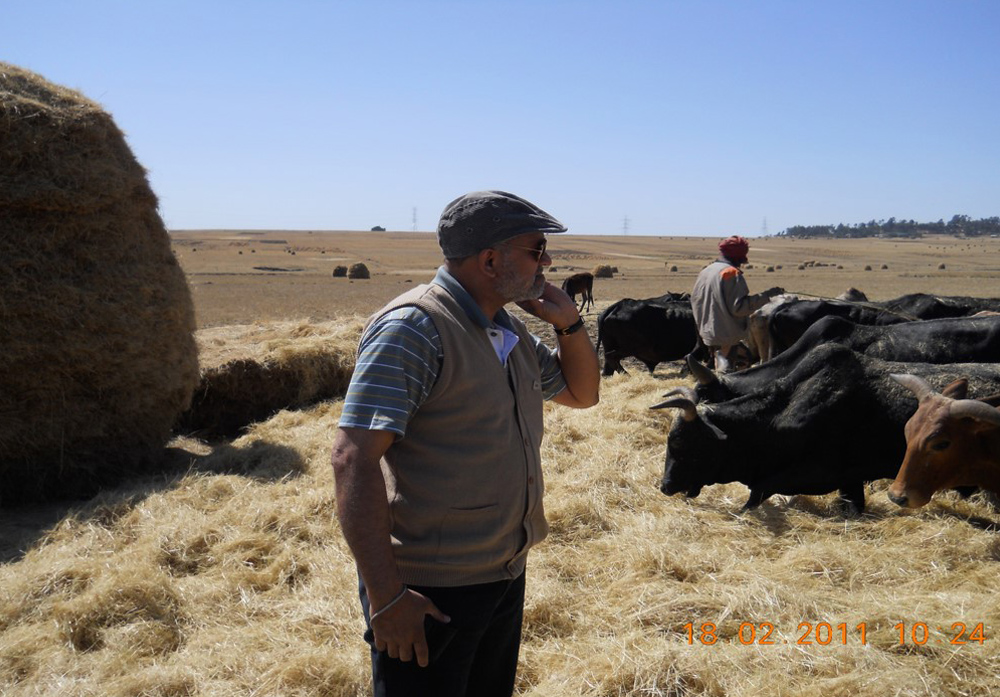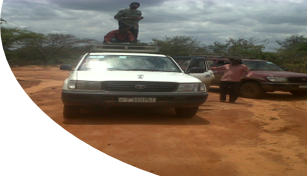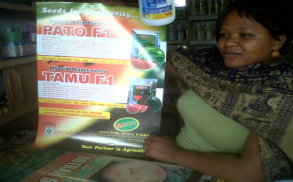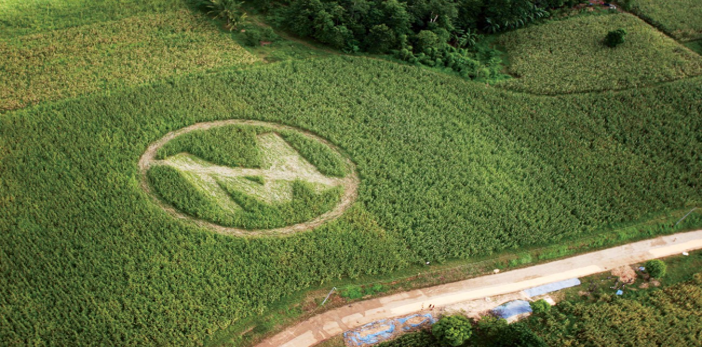Westernization, modernization ,commercialization of agriculture with reference to private sector technology intervention
World – Map

Fig-1 World Map
Commercialization Of Agriculture – Meaning

Fig-1
By commercialization of agriculture we mean production of agricultural crops for sale in the market, rather than for family consumption.
For marketization of agricultural products thus ‘surplus’ of production over consumption is required.
Farmers were forced to sell their produce to meet the revenue needs of the alien(colonial) government as well as urban demand. Peasants had to cough up some surplus at least for the market since money had become indispensable to them.
Thus commercialization of agriculture was not a spontaneous one.
Commercialization of Agriculture – Phases
There were three major phases of agricultural commercialization in colonial times.
The first phase of commercialization was associated with plantation agriculture, especially tea plantation.

The second phase of commercialization came to be known as ‘subsistence commercialization’ or the ‘jute phase’.
A third phase of commercialization is known as ‘dependent commercialization’ or the ‘indigo, cotton- phase’ of late 18th century and early 19th century.
Commercialization of Agriculture – Causes
i) The Introduction of Money-Economy:
Firstly, the process of commercialization snow-balled with the introduction of money into the village. However, trade and money relations existed in the countryside even during the Mughal reign. As soon as the desperately began to acquire more and more territories it insisted land tax to be paid in cash. The colonial rule introduced cash assessments in the system of land revenue.

ii) Ease in Means of Communication:
Secondly, the effect of monetization could not go far until internal means of transport were improved. The railway lines were built by the colonial rulers. The agricultural crops reached the parts of the then big cities and ports from self-sufficient villages with the expansion of the railway lines and roads.
iii) The US Civil War:
Thirdly, another event that sparked off the process of commercialization in agriculture was the American Civil War (1861-65). As the U.S.A. plunged into the Civil War, it transferred the European demand for raw cotton from America to India. Besides, exports of raw cotton, other raw materials like jute, oilseeds, and food-grains experienced a jump in exports
Commercialization of Agriculture – Consequences
In the process of commercialization of agriculture in a colonial economy, the vast army of peasantry loses its independence.
That is why one is tempted to say that it was a ‘forced’ commercialization, rather than a natural one.
What is true is that the surpluses generated from agriculture had not been invested on land.
Rail-radiation had a stimulating effect on the exports of agricultural produce
The changeover to cash crops discouraged the cultivation of poor men’s food crops like Sorghum, Pearl millet or pulses all over the world.

Fig-1

Fig-2
Agriculture Inputs- Supply – Credit Linkage Monopolization
Seeds
Fertilizers
Farm Machinery
Irrigation Equipment’s
Seed An Important – Live Input (Critical and Controversial)
Seeds are the primary basis for human sustenance. They are the repository of the genetic potential of crop species and their varieties resulting from the continuous improvement and selection over time.
Crop improvement and the delivery of high quality seeds and planting materials of selected varieties to growers is necessary for ensuring improved crop production and meeting growing environmental challenges.
Food security therefore is dependent on the seed security of farming communities.
Key Facts – and Role Of Seed
A 60% increase in food production must be attained by 2050 when the global population growth will result in over 9 billion persons inhabiting the planet.
Plants account for over 80% of the human diet and nutrition.
250,000 plant species of higher plants are described/identified of which 30,000 plant species are edible.
Of these, 30 plant species represent crops that feed the world, while only 5 cereal crops (rice, wheat, maize, millet and sorghum) provide 60% energy intake of the world population.
FAO’s Role In Seeds Systems
FAO plays a lead role in strengthening the conservation and sustainable use of plant genetic resources for food and agriculture through policy assistance, technical support and awareness raising.
In the broadest sense, this encompasses the whole range of actions involved in the conservation, diversification, adaptation, improvement and delivery to farmers through seed systems.
FAO in line with the Second Global Plan of Action priority activities, assists member countries in carrying out the following key activities:
- Strengthen seed production programmes, including early generation seed multiplication, taking into account comparative advantages of the public and private seed sectors.
- Strengthen national seed associations and support the emergence of local private seed enterprises involved in the production and distribution of seed through improved access to new varieties, capacity-building activities and appropriate credit schemes.
- Strengthen farmers’ capacities in seed multiplication in order to improve quality of seed produced in the informal sector particularly in transition from emergency to development activities and where there is no private sector.
- Promote value-adding activities at local level as a means of diversifying farmers’ revenues and stimulating seed demand.
- Strengthen community seed systems programmes to improve farmers’ knowledge and skills related to varieties and seeds.
History of Seeds System
Open pollinated varieties –farmer’s proprietary
Open pollinated seeds with terminator gene
Hybrid seeds with human intervention
Genetically modified seeds
Monopolization
Seed Security Assessments
Project is being implemented by FAO aiming at developing the capacity of humanitarian experts to conduct high quality and rapid seed security assessments so that better informed and timelier decisions are taken in seed-related interventions in emergency and rehabilitation contexts.
The project, running from July 2013 to December 2014, focuses on crisis-prone countries in the Sahel (Burkina Faso, Chad, Mali and Niger) and the Horn of Africa (Ethiopia, Kenya, Somalia, South Sudan). Key activities includes :
- Conducting a systematic review of completed and on-going seed security assessments.
- Strengthening the seed security assessment network and Community of Practice.
- Conducting training workshops and training of trainers at regional level.

Fig-1
Monsanto’s Harvest Of Fear
Monsanto already dominates America’s food chain with its genetically modified seeds. Now it has targeted milk production. Just as frightening as the corporation’s tactics–ruthless legal battles against small farmers–is its decades-long history of toxic contamination.

Fig-1
Monsanto Views
“Monsanto spends more than $2 million a day in research to identify, test, develop and bring to market innovative new seeds and technologies that benefit farmers,” Monsanto spokesman Darren Wallis wrote in an e-mailed letter to Vanity Fair.
“One tool in protecting this investment is patenting our discoveries and, if necessary, legally defending those patents against those who might choose to infringe upon them.”
Wallis said that, while the vast majority of farmers and seed dealers follow the licensing agreements, “a tiny fraction” do not, and that Monsanto is obligated to those who do abide by its rules to enforce its patent rights on those who “reap the benefits of the technology without paying for its use.” He said only a small number of cases ever go to trial.
Some compare Monsanto’s hard-line approach to Microsoft’s zealous efforts to protect its software from pirates. At least with Microsoft the buyer of a program can use it over and over again. But farmers who buy Monsanto’s seeds can’t even do that.
The Control Of Nature
For centuries—millennia—farmers have saved seeds from season to season: they planted in the spring, harvested in the fall, then reclaimed and cleaned the seeds over the winter for re-planting the next spring.
Monsanto has turned this ancient practice on its head.
Monsanto developed G.M. seeds that would resist its own herbicide, Roundup, offering farmers a convenient way to spray fields with weed killer without affecting crops. Monsanto then patented the seeds.
For nearly all of its history the United States Patent and Trademark Office had refused to grant patents on seeds, viewing them as life-forms with too many variables to be patented.
“It’s not like describing a widget,” says Joseph Mendelson III, the legal director of the Center for Food Safety, which has tracked Monsanto’s activities in rural America for years.

Fig-1
Monstrous Growth Of Seed Giant
Monsanto’s genetically modified seeds have transformed the company and are radically altering global agriculture.
So far, the company has produced G.M. seeds for soybeans, corn, canola, and cotton. Many more products have been developed or are in the pipeline, including seeds for sugar beets and alfalfa.
The company is also seeking to extend its reach into milk production by marketing an artificial growth hormone for cows that increases their output, and it is taking aggressive steps to put those who don’t want to use growth hormone at a commercial disadvantage.
Monopoly – Monopoly & Monopoly
Even as the company is pushing its G.M. agenda, Monsanto is buying up conventional-seed companies.
In 2005, Monsanto paid $1.4 billion for Seminis, which controlled 40 percent of the U.S. market for lettuce, tomatoes, and other vegetable and fruit seeds.
Two weeks later it announced the acquisition of the country’s third-largest cottonseed company, Emergent Genetics, for $300 million.
It’s estimated that Monsanto seeds now account for 90 percent of the U.S. production of soybeans, which are used in food products beyond counting. Monsanto’s acquisitions have fueled explosive growth, transforming the St. Louis–based corporation into the largest seed company in the world.
We are all Seeds – By Vandana Sinha




